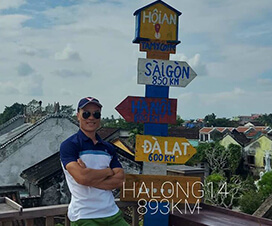Vietnam – Getting to know Sapa
Nicknamed the ‘Tonkinese Alps’ by the French, Sapa is the classic place to go trekking, take scenic photos and visit Vietnam’s ethnic minority village markets. It’s not as ‘untouched’ as remote regions like Ha Giang – there are plenty of hotels in Sapa, and some visitors are taken aback when addressed in fluent English by a tribeswoman selling trinkets. But life here, although it makes the most of the region’s fame, is still traditional, and the trekking is excellent.
Sapa can be reached by overnight train (Hanoi to Lao Cai), which takes approximately 10 hours. At the beginning of 2016, a newly opened expressway made driving a viable alternative, with the journey taking around 5 hours. Either way, it’s worth the effort: the view en route is wonderful enough, and once you’re here you’ll discover a constantly stunning landscape.
What to do in Sapa
Get your walking shoes on. Sapa and the surrounding region offers excellent walking and trekking opportunities, including the highest mountain in Sapa, Fan Si Pan, which is the final significant peak in the Himalayan chain.
Travel to remote hillside villages and local markets, which are an essential part of mountain life. Visiting is always a pleasure. Don’t be surprised to find villagers from several minority groups bartering hard over a basket of hens whilst sipping locally brewed rice wine.
Soak up the scenery. This is where those misty, pastoral images of traditional Vietnam are still a reality. Traditional dress is still worn here, with colourful outfits identifying each different hill tribe. Buffalo are farmed in the valleys, while the mountainsides are terraced for miles with lush green rice paddies.
Especially good, and perhaps the least touristy, although you will need to rise early and catch a minibus to get there.
The Sapa region is home to many rare and unique animal species, in habitats that range from alpine forest to acres of dwarf bamboo, the only vegetation that can survive here above 3,000 metres.
Speak to one of our Concierge specialists

With a tailor-made trip to Sapa, you can customize your itinerary to suit your interests and preferences. Let Myway help you to create your perfect itinerary.
Vietnam ⟩ Hanoi
Vietnam ⟩ Ho Chi Minh city ( Saigon )
Vietnam ⟩ Halong Bay
Vietnam ⟩ Phan Thiet & Mui Ne
Vietnam ⟩ Dalat
Vietnam ⟩ Quy Nhon
Vietnam ⟩ Central Highlands
Vietnam ⟩ Hoa Binh
Vietnam ⟩ Nam Cat Tien National Park
Vietnam ⟩ Cuc Phuong National Park
Vietnam ⟩ Chau Doc
Vietnam ⟩ Can Tho





